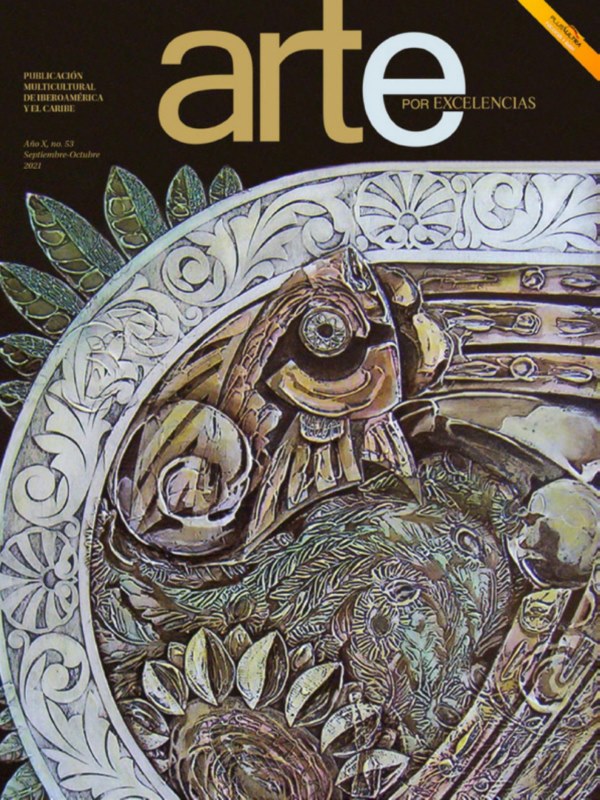The biennials of art in the world ... are so many that they run over us ... paraphrasing the old Cuban song. Few remain alive thanks to solid organizational structures, local cultural commitment and awareness of their role in the contemporary world: others, unfortunately, disappear after their third or fourth edition, perhaps because it is such an enormous effort that is rarely recognized in their society and city to which they belong. Undoubtedly, the biennial is today the most complex event of all those that exist in the artistic scene anywhere on the planet, and the most spectacular in a correct sense of the word. It is not always understood its full extent, because sometimes it is only possible to observe it partially, but that is its great challenge to expand through so many places in the city of Havana.
We have experienced since its first edition in 1984 a kind of individual and collective epic from curators, technicians and editors, as well as institutions that have supported us without reservations in our short but complex history, starting with the National Council of Plastic Arts and the Ministry of Culture of our country. And that determined epic corresponds, in a certain way, with the meaning of the struggle in itself to realize it, the way traveled, the processes to which we are subjected to try to understand the complex contemporary visual world so changing, heterodox, diverse, challenging, that we experience today.
From that initial edition, deployed between the National Museum of Fine Arts and the Cuba Pavilion, and to which the Convention Palace was added to host its discussion forum, we launched to know what was happening in Latin America and the Caribbean. Then, in its second edition of 1986, we explored regions of Asia, Africa, the Middle East in search of greater knowledge about the so-called "third world" and, in fact, to realize the first global biennial in the world that would be recognized in 1989 as one of the most important next to that of Venice, São Paulo, Sidney, Documenta de Kassel, of long experience then. Bypassing all sorts of loneliness in towns, villages and towns, little budget, as well as varied types of seduction, incomprehension and indifference, we were able to document what happened until we became cautious, modest, but confident experts and curators regarding artists, institutions, publications, projects, events of very diverse local artistic scenes.
Never in Cuba, nor in other countries visited, nothing like it was experienced, despite the fact that we had great international experiences in other artistic disciplines (film festivals, ballet, literature, theater ...). But it is that art, from the eighties to the present, has shown signs of implacable diversity, conceptualization, restructuring, dynamism, hybridization, mobility, openness, transformation, expansion, contamination, whose understanding and consequent reflection demand too much from anyone that decides to face it and assume it through exhibitions and actions as a great staging. While other disciplines of creation are still operating within their historical structures, and respecting more or less laws and norms reached, the truth is that art has been transformed so much that we find it difficult to understand it sometimes (and especially now with the incorporation of the sound, olfactory, tactile, taste, that is, the almost totality of the human senses).
Hence, some experts have dared to describe the Biennial of Havana as a true miracle: that is one of the most objective images that we have projected towards the outside, especially in those who have a short or vast experience in these matters. Without aiming to achieve official or popular recognition, we have not done anything else for thirty-five years than working for love of art, culture, the city, the country where the Biennial takes place.
The Biennial of Havana has been gaining a space in the social imaginary of Cuba and the world. Its celebration constitutes a relevant event in the life of the city and its inhabitants, who come closer to a better understanding of the forms and structures that art has generated for several decades. And a first level event for Cuban artists of all ages and promotions, since the confrontation they experience in each edition is of vital importance for the development of their careers.
Reviewing archival materials, I have been able to verify the richness of this curatorial work, its unpayable lessons of information and knowledge, the wonder that it has represented to meet every two or three years and to exchange life and experiences with other experts and creators of so many cultures in the physical space of our galleries, museums, streets, squares, houses, churches, factories, institutions, fairgrounds, hotels, promenades, parks, of this city of Havana. And what better occasion now, that this urban fabric celebrates its 500 years of existence.
In the various venues of this varied Biennial in Havana, enriched with the incorporation for the first time of other cities in Cuba -Pinar del Río, Matanzas, Cienfuegos and Camagüey-, works in paper, canvas, objects, sculptures, installations, video art, made by more than three hundred artists from fifty-two countries in a not inconsiderable number of collateral exhibitions that include just over eight hundred artists distributed in eleven of the fifteen municipalities of the city between the months of April and May.
This 13th edition of the Havana Biennial is also, therefore, a portrait of the visual expressions in certain regions of the world and, at the same time, of ourselves when proposing "The construction of the possible", according to the central theme of the same. An image of our effort to keep it alive and thriving and a modest tribute to all those who have worked over so many years with total dedication, with satisfaction, aware of our modest contribution to contemporary Cuban and universal culture.
It is true that Biennials are complicated events, difficult in their conception and development, especially when the latest experiences worldwide are increasingly inclined towards on-site, installation projects, of a performative and ephemeral nature, and video projections that require profusion of technical resources. Gone were the initial "reasons" of Venice, inexorably linked to painting, sculpture and drawing, which for several decades conditioned the "model" of the expressions to be exhibited and the "format" of the event. Today, biennials assume, as a rule, the most risky and experimental in the field of art, the most "novel". They act as test balls, laboratories where intricate and difficult relationships are proved in the conceptual and formal, and where the inclusion of other cultural disciplines not necessarily linked to the visual in the strict sense is predicted.
An art biennial is important, first of all, for the local community of men and women who aspire to high levels of education and culture in their own country. Important for the community of local artists, and for the development of the art institution. It is also for the reaffirmation of the universal sense of culture, above all of a country like ours, in whose national formation diverse ethnocultural processes converged, which gave rise to a firm universal vocation of values.
For Cuban artists, the Havana Biennial has been one of its main sources of inspiration, one of its transcendent spaces for exchange and exemplary contact with other cultures and one of its main international launch platforms. It has also been for artists from many countries, which is evident in many of their private and public statements, and this is a source of satisfaction for their organizers. For the Havana public, fundamentally, it is the widest window through which to look at what is happening in contemporary art.
We have then the satisfaction of celebrating its thirty-five years of founded betting on risk and continuity, permanence, resistance.
Related Publications

How Harumi Yamaguchi invented the modern woman in Japan
March 16, 2022
Giovanni Duarte and an orchestra capable of everything
August 26, 2020












